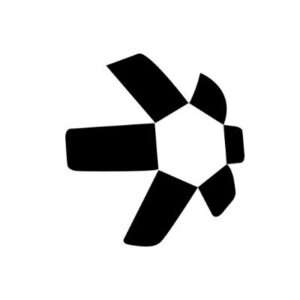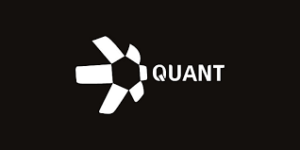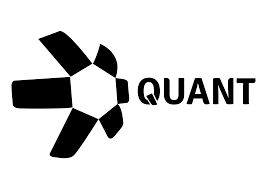Latest News
- Quant Analyst PlanB Says Bitcoin Correction ‘Normal Bull Market Dip’ After 30% Drop for BTC
- Technical Indicator Suggesting Bitcoin (BTC) Bull Market Hasn’t Started Yet: Quant Analyst PlanB
- Exploring Quantitative Strategies for Low Market Cap Crypto – Any Insights?
- Qubetics Testnet Launches and Analysts Are Bullish – Could It Be the Best Crypto with 100x Potential Ahead Of Avalanche and Quant?
Current Price
The current price of QNT is $65.56356
Introduction
Quant (QNT) represents a significant advancement in the blockchain landscape, primarily focused on resolving the persistent issue of interoperability among various distributed ledger technologies.
By leveraging its unique Overledger network, Quant facilitates the seamless integration of diverse blockchains, thereby enabling the creation of decentralized applications with enhanced functionality.
As we explore the key features, tokenomics, and recent developments surrounding Quant, it becomes essential to contemplate the implications of its approach on the future of blockchain innovation and the potential challenges that lie ahead.
Quick Overview
- Quant (QNT) facilitates interoperability among blockchains through its Overledger network, enhancing decentralized application development and cross-chain transactions.
- The fixed supply of 14.6 million QNT tokens creates scarcity, potentially increasing demand and value as adoption grows.
- Advanced cryptographic techniques ensure data integrity and confidentiality during cross-chain interactions, addressing security concerns in the blockchain ecosystem.
- Recent partnerships with financial institutions and technological advancements like Overledger 2.0 reflect Quant’s commitment to innovation and market leadership.
- QNT tokens are essential for accessing services on the Overledger network, covering transaction fees, staking, and governance within the ecosystem.

What Is Quant (Qnt)?
Quant (QNT) is a blockchain-based platform designed to facilitate interoperability between various distributed ledger technologies (DLTs) through its unique Overledger network. By enabling different blockchains to communicate and share data seamlessly, Quant addresses a critical challenge in the blockchain ecosystem.
Overledger serves as an intermediary layer, allowing developers to create multi-chain applications without the complexities typically associated with integrating disparate DLTs.
The architecture of Quant is built on a decentralized and scalable framework, which guarantees that transactions remain secure while providing high throughput. Quant’s native token, QNT, plays a pivotal role in the ecosystem, as it is required for accessing the Overledger network and facilitating transaction fees.
The total supply of QNT is capped at 14.6 million tokens, a design choice that contributes to its scarcity and potential value appreciation.
Quant’s focus on compliance and regulatory frameworks positions it favorably within enterprise environments, making it an appealing choice for businesses looking to leverage blockchain technology without being hindered by interoperability issues.
As companies increasingly recognize the importance of cohesive blockchain solutions, Quant’s innovative approach may well redefine how organizations interact with DLTs in the future.
The Problem of Interoperability
As blockchain technology continues to evolve, the challenge of interoperability among diverse distributed ledger systems has become increasingly pronounced. Various blockchain networks operate in silos, limiting their ability to communicate and share data efficiently. This fragmentation hinders the full potential of blockchain applications and presents significant obstacles to broader adoption.
Key issues contributing to the interoperability problem include:
- Diverse Protocols: Different blockchains utilize varying consensus mechanisms, data structures, and programming languages, making it difficult for them to interact seamlessly.
- Scalability Issues: Many existing interoperability solutions struggle to scale effectively, leading to performance bottlenecks when handling large volumes of transactions across multiple chains.
- Security Concerns: Ensuring secure communication between blockchains is paramount. Weaknesses in one network can compromise the integrity and security of others, posing risks to user data and assets.
Addressing these challenges is critical for revealing the full capabilities of blockchain technology. Solutions that facilitate interoperability not only enhance the functionality of individual networks but also foster innovation, collaboration, and efficiency across the broader blockchain ecosystem.
Key Features of Quant
Frequently recognized for its innovative approach, Quant (QNT) offers a suite of features designed to address interoperability challenges in the blockchain space. One of its most notable attributes is the Overledger technology, which facilitates seamless communication between different blockchains. This capability allows developers to create decentralized applications (dApps) that can operate across multiple blockchain networks, enhancing the functionality and usability of blockchain solutions.
Additionally, Quant employs a unique multi-chain architecture that not only supports various protocols but also enables cross-chain transaction capabilities. This design greatly reduces the complexities associated with traditional blockchain integrations.
The platform also emphasizes security, utilizing advanced cryptographic techniques to guarantee that data integrity and confidentiality are maintained during cross-chain interactions.
Moreover, Quant’s native token, QNT, serves multiple purposes, including transaction fees and staking within the Overledger ecosystem. This economic model is designed to incentivize participation while guaranteeing that the network remains sustainable and scalable.
The Overledger Network Explained
At the heart of Quant’s innovative approach lies the Overledger Network, which serves as a foundational component for achieving blockchain interoperability. This platform enables seamless communication and data transfer between multiple blockchains, thereby addressing one of the most significant challenges in the crypto ecosystem—fragmentation.
The Overledger Network operates through three critical mechanisms:
- Multi-Chain Applications (MApps): These applications leverage the capabilities of various blockchains, allowing developers to create solutions that harness the strengths of multiple networks simultaneously.
- Interoperability Layer: By facilitating cross-chain transactions and data sharing, the Overledger Network eliminates the silos that typically exist between independent blockchain networks, enhancing overall efficiency.
- Decentralized Governance: The network employs a governance model that promotes community participation, ensuring that the evolution of the platform aligns with user needs and market demand.
The Overledger Network is not merely a technical solution; it embodies a strategic vision for a decentralized future, enabling businesses and developers to transcend the limitations inherent to individual blockchains.
This positions Quant as a pivotal player in the ongoing quest for blockchain connectivity and utility.
Use Cases and Applications
The versatility of the Overledger Network opens up a myriad of use cases and applications across various industries, demonstrating its potential to revolutionize how organizations interact with blockchain technology.
One prominent application is in supply chain management, where Overledger facilitates real-time tracking and verification of goods across multiple blockchain platforms. This capability enhances transparency and reduces fraud, ultimately improving operational efficiency.
Furthermore, Overledger enables seamless interoperability between financial institutions, allowing for more efficient cross-border transactions. By bridging different payment networks, it reduces costs and transaction times, which can greatly benefit remittance services and international trade.
In healthcare, Overledger can be utilized for secure sharing of patient records across various systems while maintaining compliance with regulations such as HIPAA. This interconnectedness guarantees that healthcare providers have access to thorough patient histories, ultimately improving patient outcomes.
Additionally, the Overledger Network supports the development of decentralized applications (dApps) that can leverage the benefits of multiple blockchains simultaneously. This feature fosters innovation in areas such as digital identity, voting systems, and IoT integration, showcasing a diverse range of potential applications that can transform existing paradigms.
Tokenomics of QNT
The tokenomics of QNT is characterized by a fixed supply of 14.6 million tokens, with a strategic distribution model that supports both network growth and stability.
This limited supply, combined with the utility of QNT for accessing the Overledger network and facilitating transactions, underscores its role within the ecosystem.
Additionally, the use cases of QNT extend beyond mere transaction fees, encompassing governance and incentivization mechanisms that drive engagement and adoption.
Supply and Distribution Model
Quant (QNT) operates on a well-defined supply and distribution model that plays an essential role in its overall tokenomics. This model is designed to facilitate the growth and stability of the Quant Network while ensuring that the token maintains its value in the marketplace.
Key aspects of the supply and distribution model include:
- Total Supply: There is a capped total supply of 14.6 million QNT tokens, which creates scarcity and potentially increases demand as adoption grows.
- Distribution Mechanism: QNT tokens are distributed through a variety of channels, including initial sales, ongoing development funding, and strategic partnerships, ensuring a diverse ownership base.
- Utility Function: The tokens are primarily utilized for accessing services on the Overledger network, which connects various blockchains and allows for seamless interoperability.
This carefully structured model not only supports the operational framework of the Quant Network but also positions QNT as a crucial asset in the evolving landscape of blockchain technology.

Utility and Use Cases
As a pivotal component of the Quant ecosystem, QNT tokens serve multiple utility functions that enhance their value proposition and applicability within the blockchain domain. Primarily, QNT facilitates access to the Overledger network, allowing enterprises to build and deploy multi-chain applications seamlessly, leveraging the interoperability that Quant aims to provide.
One of the key use cases is the payment of transaction fees within the Overledger environment, where QNT is required for smart contract execution and data transfer, thereby creating a robust demand for the token. Additionally, QNT holders can stake their tokens, which not only incentivizes participation in network security but also generates passive income through rewards.
Furthermore, as Quant continues to forge partnerships with various blockchain networks and enterprises, the utility of QNT is likely to expand. This could include integrations with decentralized finance (DeFi) applications and other emerging blockchain solutions, further solidifying its role as a critical asset in the evolving digital economy.
The cumulative effect of these utilities underpins the token’s long-term value and its potential to adapt to the dynamic landscape of blockchain technology.
Recent Developments and Partnerships
Recent developments in Quant (QNT) have been marked by strategic alliances that enhance its interoperability capabilities across various blockchain networks.
Additionally, the introduction of technological advancements, such as the Overledger Network upgrades, positions Quant to address the growing demand for seamless integration in decentralized finance and enterprise solutions.
These initiatives not only strengthen its market position but also reflect a commitment to innovation in a rapidly evolving digital landscape.
New Strategic Alliances
In the evolving landscape of blockchain technology, strategic alliances have become pivotal for growth and innovation. Quant (QNT) has actively sought partnerships that bolster its mission of interoperability among diverse blockchain networks. These collaborations not only enhance its technological capabilities but also expand its market reach.
Key recent strategic alliances include:
- Partnership with Overledger Network: This collaboration enhances connectivity between multiple blockchains, enabling seamless data exchange and reducing operational silos.
- Collaboration with financial institutions: By joining forces with banks and payment processors, Quant aims to facilitate efficient cross-border transactions, positioning itself as a leader in the financial blockchain sector.
- Alliance with emerging tech firms: Partnering with innovative startups allows Quant to integrate cutting-edge technologies, ensuring its solutions remain relevant and competitive.
These strategic alliances are indicative of Quant’s commitment to establishing a robust ecosystem that supports scalability and efficiency across blockchain platforms.
As these partnerships mature, they are expected to yield significant advancements in Quant’s offerings and enhance its competitive positioning in an increasingly crowded market.
Recent Technological Advancements
Following the establishment of strategic alliances, Quant (QNT) has made notable strides in technological advancements that complement its collaborative efforts. The introduction of Overledger 2.0 has been a pivotal development, enhancing interoperability across various blockchain networks. This upgrade enables seamless communication between disparate platforms, optimizing transaction efficiency and reducing latency, which is essential for enterprise-level applications.
Additionally, Quant has been actively engaged in integrating its technology with major financial institutions, exemplified by recent partnerships with central banks exploring digital currency frameworks. These collaborations are not merely theoretical; they allow Quant to refine its solutions based on real-world feedback and regulatory compliance, positioning itself as a leader in the digital asset space.
Moreover, Quant’s commitment to security and scalability is evident through its implementation of advanced cryptographic protocols. This guarantees that data integrity and user privacy are upheld, a vital requirement for institutional adoption.

Future Outlook for Quant
The future outlook for Quant (QNT) is shaped by a confluence of technological advancements and market dynamics that underscore its potential within the blockchain ecosystem. As enterprises increasingly seek interoperability solutions, Quant’s Overledger technology positions it strategically to capitalize on this demand.
Key factors influencing Quant’s future include:
- Growing Adoption: With a surge in blockchain adoption across various sectors, Quant’s ability to facilitate seamless communication between different networks could drive significant user growth.
- Regulatory Environment: As regulations around digital assets evolve, Quant’s compliance features may attract enterprises looking for secure solutions that meet regulatory standards, enhancing its credibility and market share.
- Partnerships and Collaborations: Strategic alliances with key players in finance, healthcare, and supply chain sectors will likely bolster Quant’s visibility and utility, further establishing it as a leading provider of interoperability solutions.
Quant’s innovative approach, combined with a robust strategic framework, positions it favorably amid a rapidly growing market.
As it continues to evolve, stakeholders should closely monitor these dynamics to gauge its long-term viability and growth potential.
Frequently Asked Questions
What Exchanges Can I Buy QNT On?
To purchase QNT, consider reputable cryptocurrency exchanges such as Binance, Coinbase, and Kraken. These platforms provide liquidity, security, and a user-friendly interface, facilitating efficient transactions for investors seeking to acquire QNT tokens.
Is QNT a Good Long-Term Investment?
Evaluating the long-term investment potential of any asset requires examining market trends, technological adoption, and regulatory developments. A thorough analysis of these factors, alongside QNT’s unique value proposition, is essential for informed investment decisions.
What Wallets Support QNT Tokens?
Various wallets support QNT tokens, including hardware wallets like Ledger and Trezor, mobile wallets such as Trust Wallet and Atomic Wallet, and web wallets like MetaMask. Verify compatibility and security before selecting a suitable wallet for storage.
How Does QNT Compare to Other Cryptocurrencies?
When comparing cryptocurrencies, factors such as technology, scalability, market adoption, and utility are essential. QNT stands out for its interoperability framework, enabling seamless communication between different blockchain networks, which positions it uniquely within the cryptocurrency ecosystem.
What Are the Risks Associated With Investing in Qnt?
Investing in cryptocurrencies entails various risks, including market volatility, regulatory uncertainties, technological vulnerabilities, and liquidity challenges. These factors can considerably affect asset performance, necessitating thorough research and risk assessment before committing capital.
Wrapping Up
To sum up, Quant (QNT) emerges as a pivotal solution to the pressing issue of blockchain interoperability.
Its Overledger network facilitates seamless communication across diverse distributed ledger technologies, thereby promoting the development of decentralized applications.
The capped supply of QNT tokens enhances scarcity and potential value appreciation, while recent advancements and partnerships solidify its position within the blockchain ecosystem.
As demand for interoperable solutions increases, Quant’s innovation and strategic initiatives are likely to drive significant growth and adoption in the future.
